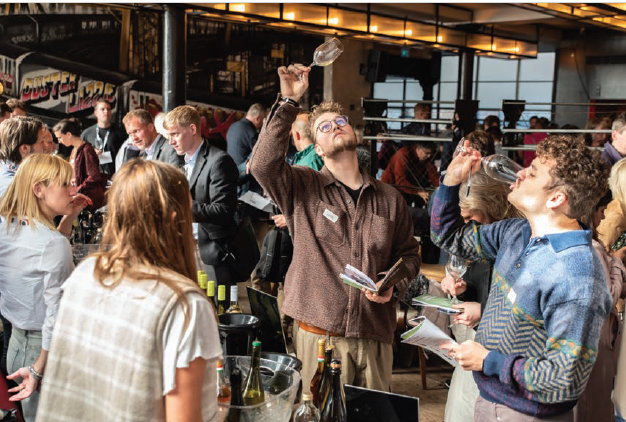Fine wine profile: Dry response to sweet wines
The celebrated sweet wines of Tokaj are both under-bought and underpriced.
What is it about sugar and wine? We like it in our coffee, chocolate, and cheesecake, but when it comes to something vinous, the richness, power and palate-pleasing sweetness in Sauternes or Spätlese – although combined with refreshing, balancing acidity – is a facet that’s not only underappreciated, but often, strangely, deemed unsophisticated. But with the rise in prices of Château d’Yquem, driven primarily by demand from the Far East (or speculative purchasing in anticipation of increasing consumption in China), the image of the world’s greatest sweet wines may be changing. And if it is, Ben Howkins, managing director of the Royal Tokaji Wine Company, wants to ensure his wines, and illustrious region, are part of the upsurge.
Recent history, however, has seen the globe’s most renowned sources of botrytised sweet wines – Bordeaux and Tokaj-Hegyalja – struggle to attract the prices on shelf that reflect both their high cost of production and rarity, as well as quality. And it is Tokaj that has suffered the biggest handicap while arguably offering the most potential. Why? The region was the world’s first celebrated sweet wine and is the oldest delimited appellation, but it has endured, in turn, phylloxera, war, and finally communism – with the latter lasting from 1939 to 1990, promoting quantity ahead of quality. But today, with 20 years’ worth of investment and imported expertise, the region has rediscovered its terroir, and refined its inimitable character.
Kick-starting change was The Royal Tokaji Wine Company, the first private winery in the region post communism, formed in 1990 with Danish investors as well as wine writer Hugh Johnson and 63 local producers, headed by the highly regarded Istvan Szepsy. Presently, although Johnson is still involved, the majority shareholder of the company is industrialist Damon de László, who has Hungarian ancestry. The pioneering spirit remains, and Royal Tokaji has done much to improve the appellation’s international reputation with events in Asia and elsewhere, always with a focus on its flagship single vineyard offerings, which it calls first growths, such as Szt Tamás and Mézes Mály. More recently, last year, the company celebrated its 20th anniversary with the opening of a new winery at its base in Mad, giving the producer greater flexibility and capacity.
Looking ahead, it is hoping to cement a fine wine reputation for the nobly-rotten Tokaji Aszus with ambitious pricing plans and an en primeur approach to vintage releases.
Howkins justifies such a strategy on the basis of Tokaj’s unique terroir, history and extremely limited production – it is just 10% of the size of Sauternes in terms of quantities made (that is when it comes to the azsus). Of course, the real rarity exists – aside from the essencia – with the single vineyard offerings, which account for miniscule amounts: for example, just over 2,000 half bottles are produced of the company’s prized Mezes Maly 6 Puttonyos Tokaji, and this is made only when vintage conditions are perfect for the formation of noble rot.
Explaining and justifying this long-term and expensive emphasis on site specifics in the region, Howkins says: “We need to show that Tokaj is the oldest designated wine appellation in the world and if you can’t show that by highlighting the differences in terroir then we are not playing to our strengths.”
As for the Mézes Mály plot specifically, he adds: “If there was a hit list of the greatest vineyards in the world, this would be in it.” Hence his frustration that the intensely sweet aszu wines made from this site, particularly the 2003 vintage on the market at the moment, aren’t receiving the widespread recognition and associated pricing Howkins would like. “We should be shadowing Yquem,” he states.
That’s not to suggest the Mézes Mály is attempting to mimic the famous Sauternes property, but merely that it should be similarly revered. “They should be seen as two different wines, like Domaine de la Romanée-Conti and Lafite,” he explains, and Howkins reminds, continuing the comparison with Sauternes: “We [Mézes Mály] have double the acidity and 3-4% lower alcohol.”
Partner Content
Change to the pricing of the Mézes Mály Tokaji is planned however, and Howkins says: “We will be increasing the prices once we can see real traction on demand.” Meanwhile, a Bordeaux-style early release is planned firstly for the company’s very sweetest and rarest of products, the essencia. “We will release the essencia 2003 in September and we are considering a first tranche offer,” admits Howkins, adding that he would also “like to do an en primeur offering for Mézes Mály… to make it more collectible”.
Interestingly, Howkins makes a further comparison between the great sweet wines of Sauternes and Tokaji. While vineyards in the former region can change hands for as much as E1 million per hectare, according to Howkins, in Tokaji, the best sites cost a fifth that amount. Land prices have stalled in the last few years due to a ruling preventing foreigners buying land in Tokaji after the initial injection of international funds in the early 1990s. This constraint has been “extended and extended”, according to Howkins, although it is due to be finally lifted on 1 May 2014, which may instigate a rise in vineyard prices.
For now, turning a profit from Tokaji increasingly requires the production of dry, as well as late-harvest wines alongside the prized aszus. The Royal Tokaji Company has hence been active in these less expensive stylistic sectors, and has, in particular, refined its dry Furmint offering to suit a UK taste for fruit-driven whites and, in the future, Howkins hopes to apply the Royal Tokaji single-vineyard approach to these dry wines too. But while “dry Furmint production and sales are an integral part of the survival of the region”, he does remind that this grape is “still unknown in export markets” and records, “a grey market in central Europe of very cheap wines using the Furmint name”.
Howkins is also adamant that Tokaji’s reputation as a fine wine region must rest with its botrytised sweet wines. “Tokaji has always been about aszu, rich and expensive wines,” he states, and, remarking on the progress made in the last 20 years from his own company’s perspective, he presents this marked contrast: “We began as a start-up in Eastern Europe and now we are a producer of luxury goods in the EU.”
Key facts: Royal Tokaji Wine Company
The Royal Tokaji Wine Company was founded in Hungary in 1990 and from the outset decided to concentrate on producing single-vineyard wines, made from the “first growth” vineyards of Mezes Maly, Nyulaszo, Szt Tamas and Betsek.
The Royal Tokaji selection of wines currently includes: Dry Furmint 2007, Late Harvest 2008, 5 Puttonyos 2006, 6 Puttonyos 2005, Betsek 6 Puttonyos 1st growth 2005, Nyulászó 6 Puttonyos 1st growth 1999, Szt Tamás 6 Puttonyos 1st growth 2003, Mézes Mály 6 Puttonyos great 1st growth 2003, Essencia 2000.





As opposed to being upset that Tokai is not justly rated alongside Sauternes, l am perplexed as to why they don’t market the wine to outflank the Bordelais. There are many ways in which it could be done. The Sun King obligingly provided the autoroute du soleil to this goal when he called it the “king of wines and wine of kings”. No such praise was ever heaped on Sauterne. The fact that it was not being produced is a minor detail!